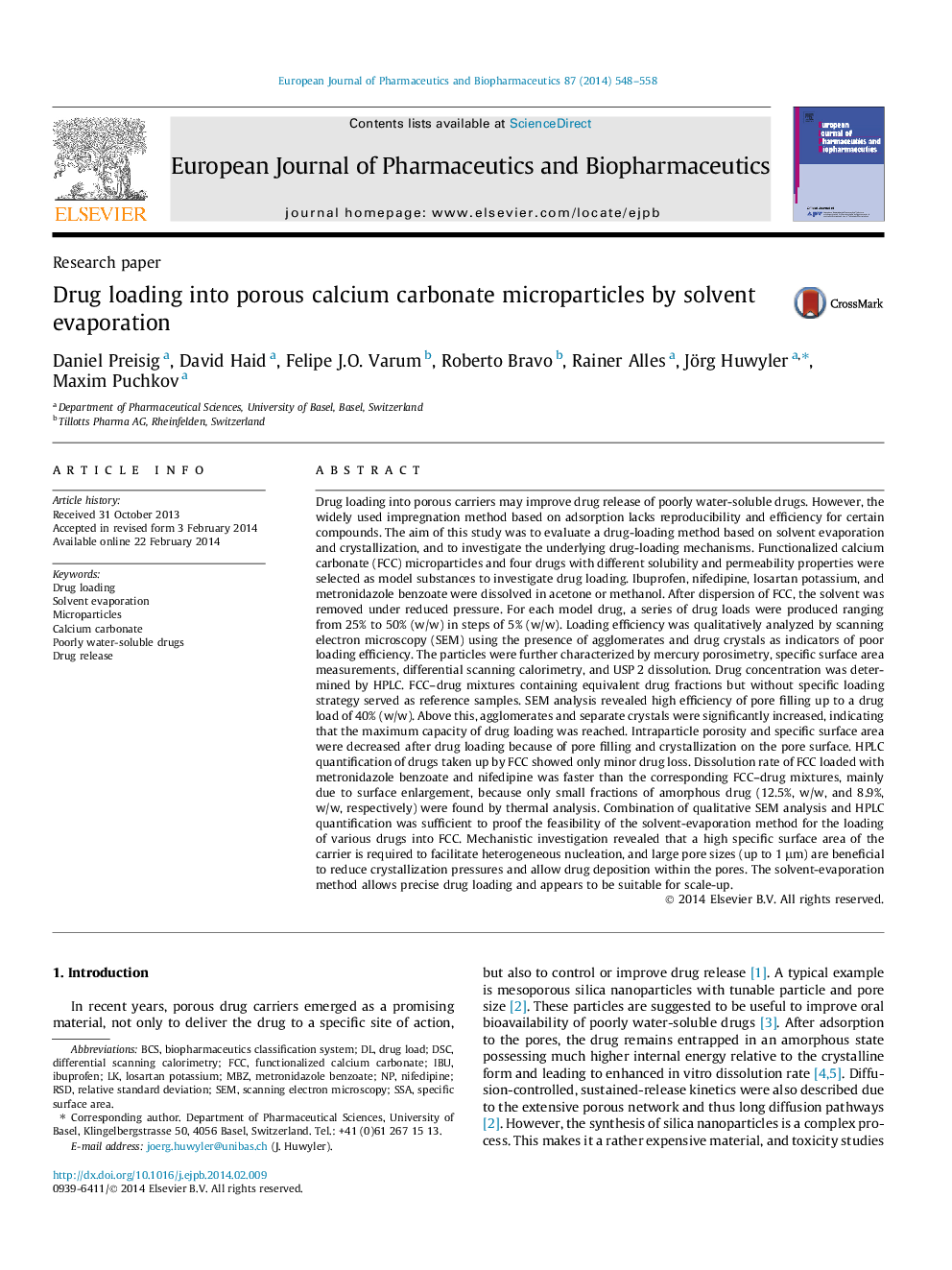| کد مقاله | کد نشریه | سال انتشار | مقاله انگلیسی | نسخه تمام متن |
|---|---|---|---|---|
| 2083987 | 1545340 | 2014 | 11 صفحه PDF | دانلود رایگان |
Drug loading into porous carriers may improve drug release of poorly water-soluble drugs. However, the widely used impregnation method based on adsorption lacks reproducibility and efficiency for certain compounds. The aim of this study was to evaluate a drug-loading method based on solvent evaporation and crystallization, and to investigate the underlying drug-loading mechanisms. Functionalized calcium carbonate (FCC) microparticles and four drugs with different solubility and permeability properties were selected as model substances to investigate drug loading. Ibuprofen, nifedipine, losartan potassium, and metronidazole benzoate were dissolved in acetone or methanol. After dispersion of FCC, the solvent was removed under reduced pressure. For each model drug, a series of drug loads were produced ranging from 25% to 50% (w/w) in steps of 5% (w/w). Loading efficiency was qualitatively analyzed by scanning electron microscopy (SEM) using the presence of agglomerates and drug crystals as indicators of poor loading efficiency. The particles were further characterized by mercury porosimetry, specific surface area measurements, differential scanning calorimetry, and USP 2 dissolution. Drug concentration was determined by HPLC. FCC–drug mixtures containing equivalent drug fractions but without specific loading strategy served as reference samples. SEM analysis revealed high efficiency of pore filling up to a drug load of 40% (w/w). Above this, agglomerates and separate crystals were significantly increased, indicating that the maximum capacity of drug loading was reached. Intraparticle porosity and specific surface area were decreased after drug loading because of pore filling and crystallization on the pore surface. HPLC quantification of drugs taken up by FCC showed only minor drug loss. Dissolution rate of FCC loaded with metronidazole benzoate and nifedipine was faster than the corresponding FCC–drug mixtures, mainly due to surface enlargement, because only small fractions of amorphous drug (12.5%, w/w, and 8.9%, w/w, respectively) were found by thermal analysis. Combination of qualitative SEM analysis and HPLC quantification was sufficient to proof the feasibility of the solvent-evaporation method for the loading of various drugs into FCC. Mechanistic investigation revealed that a high specific surface area of the carrier is required to facilitate heterogeneous nucleation, and large pore sizes (up to 1 μm) are beneficial to reduce crystallization pressures and allow drug deposition within the pores. The solvent-evaporation method allows precise drug loading and appears to be suitable for scale-up.
Figure optionsDownload high-quality image (299 K)Download as PowerPoint slide
Journal: European Journal of Pharmaceutics and Biopharmaceutics - Volume 87, Issue 3, August 2014, Pages 548–558
